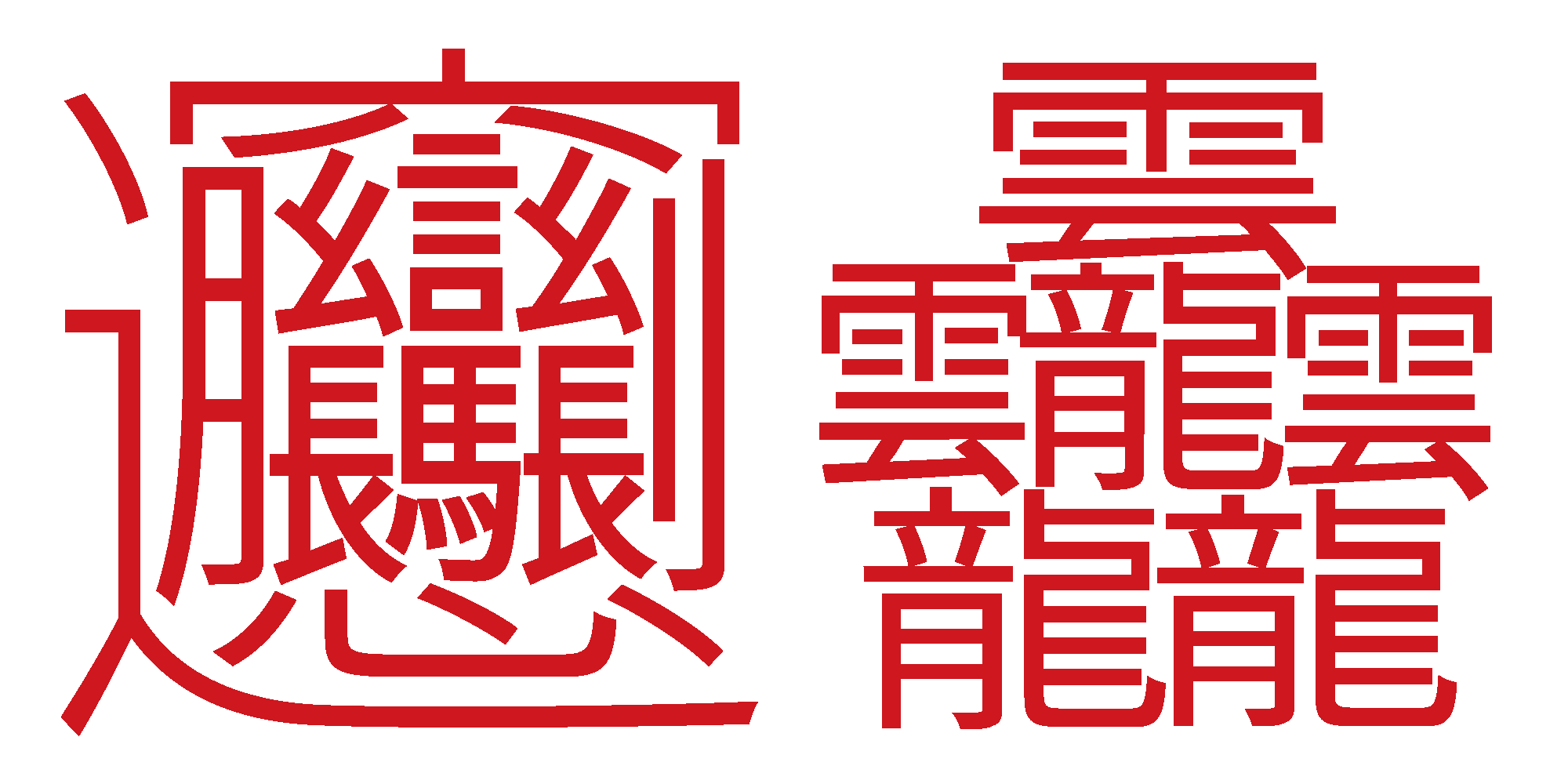
English (英語) here
新元号に対応した Adobe-Japan1-7 サブセットフォント作成方法の提案とフィードバックのお願い
(前回の記事で述べたように、日本で新しい元号が発表されると、まもなく Adobe-Japan1-6 文字コレクションの仕様が Adobe-Japan1-7 へ更新される。この記事では、フォントの更新に必要となる作業を説明、提案する。読者からのフィードバックを歓迎する。)
Adobe-Japan1-6 に含まれる 23,058 個のグリフを全てサポートしている日本語の OpenType フォントについては、Adobe-Japan1-7 に更新するのは比較的シンプルだ。二つのグリフとそれに関連するマッピングを追加、そして Adobe-Japan1-7 の識別子を使用してそのフォントに名前をつければ完成だ。だが、もちろん、すべてのフォントに新年号用合字を加えて、Adobe-Japan1-7 にアップデートする必要はない。この記事はアップデートしたいフォントがある場合に、フォント開発者に参照していただきたい。
まず、「OpenType Font Development」のサブセクションの「JIS2004-Savvy OpenType Fonts」にある表は以下のようにアップデートする必要があることは明らかだ。
| Supplement |
Designator |
JIS2004-Savvy Designator |
/CIDFontName & Menu Name Examples |
| 3 |
Std |
StdN |
KozMinStd-Regular, 小塚明朝 Std R & KozMinStdN-Regular, 小塚明朝 StdN R |
| 4 |
Pro |
ProN |
KozMinPro-Regular, 小塚明朝 Pro R & KozMinProN-Regular, 小塚明朝 ProN R |
| 5 |
Pr5 |
Pr5N |
KozMinPr5-Regular, 小塚明朝 Pr5 R & KozMinPr5N-Regular, 小塚明朝 Pr5N R |
| 6 |
Pr6 |
Pr6N |
KozMinPr6-Regular, 小塚明朝 Pr6 R & KozMinPr6N-Regular, 小塚明朝 Pr6N R |
| 7 |
Pr7 |
Pr7N |
KozMinPr7-Regular, 小塚明朝 Pr7 R & KozMinPr7N-Regular, 小塚明朝 Pr7N R |
だが、下位の Supplement だけをサポートする JIS90 対応のフォント、あるいは、上位の Supplements から少数のグリフのみを取り入れて JIS2004 対応としているフォントについては、どのように対処すべきだろうか。以下に詳述する。
全ての日本語フォントが Adobe-Japan1-6 で指定された 23,058 個のグリフ全てを含んでいるわけではなく、多くのフォントが Adobe-Japan1-3 だけをサポートしている。その中には、JIS2004 対応とするために、上位 Supplements 4 ~ 6 の中から、144 個のグリフを追加したものもある。例えば、macOS にバンドルされた最新のヒラギノフォントは Adobe-Japan1-3 か Adobe-Japan1-5 をサポートし、JIS2004 に対応している。日本語書体のグリフをデザインするには膨大な時間と労力が必要だ。しかも、23,000 個以上のグリフが必要とされている場合でも、23,000 個のグリフ全てが頻繁に使われるわけではない。
そこで Adobe-Japan1-6 をフルにサポートしていないフォントをサポートするよう拡張するより、新元号の漢字から成る合字のグリフのみを追加したいという要求がまず生ずるだろう。そのために必要となる作業は以下のとおりだ。
JIS90 準拠の OpenType フォント
JIS90 に準拠する OpenType フォントの開発は比較的容易だった。というのもこれらのフォントはすでに定義されていた Supplements の中から一つを選び、そこに定義されているグリフ含めればよかったからだ。一般的な多くのフォントが、Adobe-Japan1-3(グリフ数 9,453)、Adobe-Japan1-4(グリフ数 15,444)、Adobe-Japan1-5(グリフ数 20,317)のいずれかとなっている。
Adobe-Japan1-7 と新元号用の二つのグリフを検討する場合、Supplement 3(別名 StdN)フォントには CID+23058(横書き用)だけが必要だ。現在と以前の年号の縦書き用合字は、Supplement 4 で初めて加えられたので、Supplement 3 ではサポート範囲外と見なすことができる。Supplement 4 とそれ以上のフォントでは、CID+23058 と CID+23059(縦書き用)を単に追加するだけだ。フォント名中の識別子 Pro、Pr5、Pr6 はそのままにし、CFF テーブル中、Supplement の値は「7」とする。
JIS2004 準拠の OpenType フォント
Adobe-Japan1-6 の文字コレクションは「OpenType Font Development」のサブセクションの「JIS2004-Savvy OpenType Fonts」にある下記の表の通りだ。JIS2004 に準拠するために上位の Supplements からのどのグリフを下位の Supplement をサポートするフォントに追加すべきかがわかる。
| Supplement |
Additional Glyphs |
Designator |
CIDs & CID Ranges |
| 3 |
144 |
StdN |
4—9354, 9779, 12101, 12870, 13320–13327, 13330, 13332–13333, 13335–13341, 13343, 13345–13355, 13358–13369, 13371, 13373–13382, 13385–13388, 13391–13400, 13402, 13460, 13495, 13538, 13624, 13650, 13673, 13731, 13803, 13860, 13893, 13915, 13949, 13964, 14013, 14066, 14074, 14111, 14116, 14196, 14272, 14290
5—16977, 17041, 18760, 19312, 19346, 20175, 20222, 20263–20296, 20301–20305, 20307, 20314
6—21072–21074 |
| 4 |
81 |
ProN |
5—16413, 16444–16449, 16467–16468, 16889, 16905, 16977, 17014, 17041, 17168, 17205, 18759–18760, 19061, 19312, 19346, 20175, 20222, 20263–20296, 20299–20310, 20312–20315
6—21071–21074, 21558, 21933, 22010, 22920 |
| 5 |
10 |
Pr5N |
6—21071–21074, 21371, 21558, 21722, 21933, 22010, 22920 |
以下の表では、Adobe-Japan1-7 とその二つの新しいグリフを考慮に入れた場合、下位 Supplements をサポートするフォントがどのように調整されるべきかを示す。
| Supplement |
Additional Glyphs |
Designator |
CIDs & CID Ranges |
| 3 |
145 |
StdN |
4—9354, 9779, 12101, 12870, 13320–13327, 13330, 13332–13333, 13335–13341, 13343, 13345–13355, 13358–13369, 13371, 13373–13382, 13385–13388, 13391–13400, 13402, 13460, 13495, 13538, 13624, 13650, 13673, 13731, 13803, 13860, 13893, 13915, 13949, 13964, 14013, 14066, 14074, 14111, 14116, 14196, 14272, 14290
5—16977, 17041, 18760, 19312, 19346, 20175, 20222, 20263–20296, 20301–20305, 20307, 20314
6—21072–21074
7—23058 |
| 4 |
83 |
ProN |
5—16413, 16444–16449, 16467–16468, 16889, 16905, 16977, 17014, 17041, 17168, 17205, 18759–18760, 19061, 19312, 19346, 20175, 20222, 20263–20296, 20299–20310, 20312–20315
6—21071–21074, 21558, 21933, 22010, 22920
7—23058–23059 |
| 5 |
12 |
Pr5N |
6—21071–21074, 21371, 21558, 21722, 21933, 22010, 22920
7—23058–23059 |
容易に見て取れるように、Supplement 3 のサブセットは Supplement 7 からの CID+23058 のみを含む。JIS90 準拠のフォントの項で説明したように、CID+23059 が含まれなくていい理由は現在と以前の三つの元号 U+337B「㍻」、U+337C「㍼」、U+337D「㍽」及び U+337E「㍾」の縦書き用合字が Supplement 4 に含まれていて、Supplement 3(別名 StdN)には含まれていないからだ。これらの合字のCIDは、Supplement 4 において、12041 から 12044 となっている。なお、「StdN」グリフセット(Adobe-Japan1-3 と Supplements 4 から 6 までの 144 個のグリフ)は 10 年以上安定しており、元号の縦書き用合字への要望はいままでなかったことを付け加えておく。
最後に、CFF テーブル中の Supplement の値は CID の末尾の値に合わせるべきであることを強調しておきたい。例えば、CID+23058 を含む Adobe-Japan1-3 フォントは「Std」フォントであっても「StdN」フォントであっても、「7」を Supplement 値に指定するべきである。
この記事に関してのフィードバックをお送りいただきたい。ここで提案した方法は理にかなっていると思うが、他のオプションを検討する時間もまだ十分にある。
🐡







